Bunny Mellon: The Truman Capote ‘Swan’, muse and horticulturalist whose creations for The White House were recently lost forever
As Tiffany & Co. pay homage to Bunny Mellon with a new Bird on a Rock collection, Owen Holmes takes a look at the most iconic garden designs of this heiress-horticulturist, from her Virginia estate to the White House to Versailles.
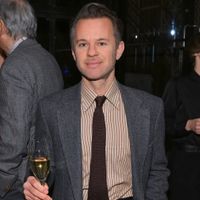
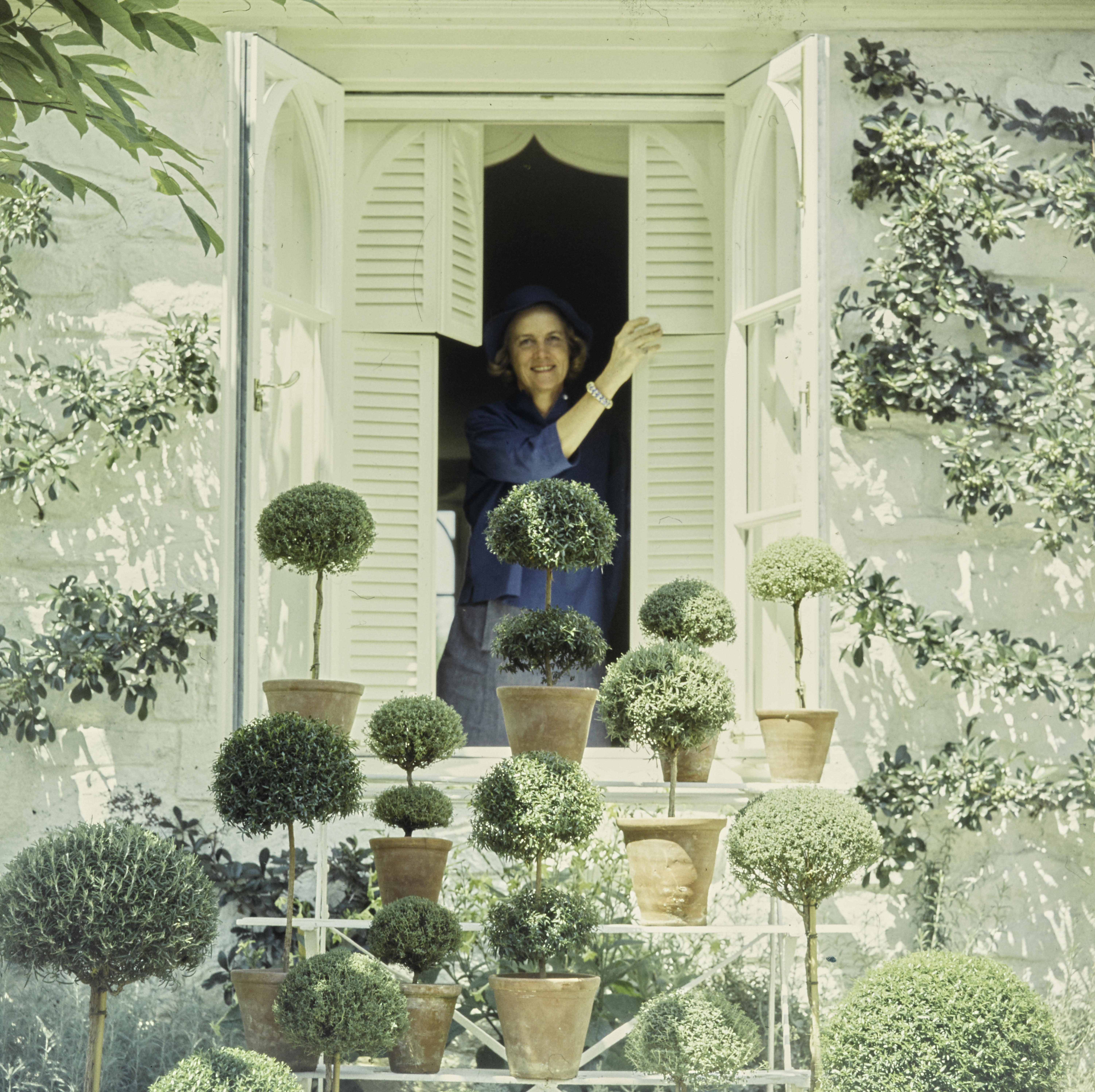
Herb topiaries, wicker baskets, porcelain cabbages: The visual vocabulary of design deity Rachel ‘Bunny’ Mellon, heiress and horticulturalist, is as alive today as when she put it all together in the middle of the last century. ‘Everyone copies her, everyone references her, including me’, Tory Burch has said.
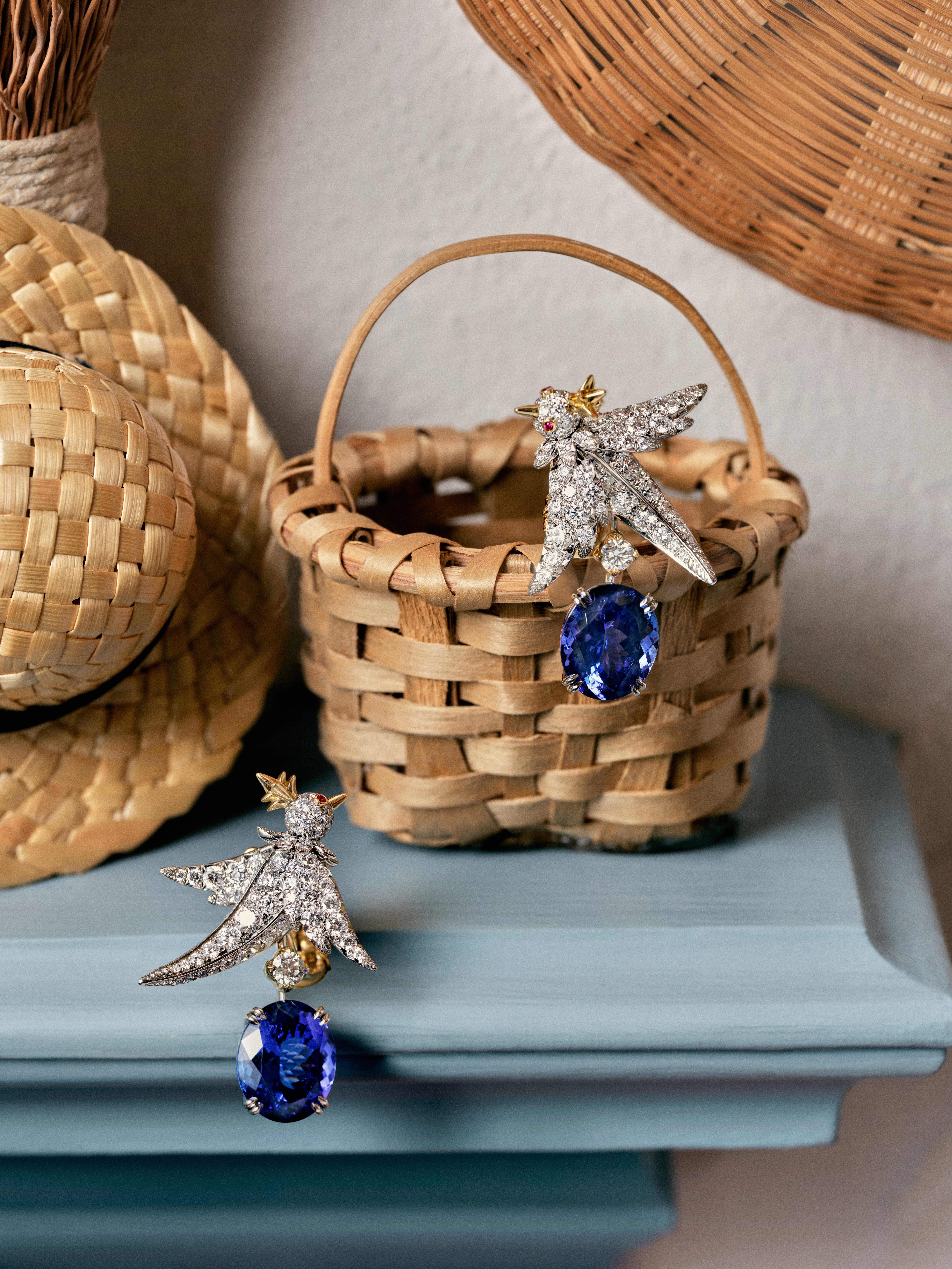
Tiffany's latest Bird on a Rock collection was photographed in Oak Spring, Bunny Mellon's personal home.
Mellon (1910–2014) was famously private, but a few close relationships, rooted in the shared pursuit of beauty, thrived over decades. Jackie Kennedy’s devotion in matters of taste and friendship was sealed with her first visit to Oak Spring, the Virginia estate of Bunny and her second husband Paul Mellon. Hubert de Givenchy delighted in designing Mellon’s gowns and gardening smocks; the two were infatuated. And the jewellery designer Jean Schlumberger found in Mellon his muse and most loyal patron. She owned 150 of his pieces.
This last partnership is being celebrated by Tiffany & Co. with its ‘Bird on a Rock by Tiffany’ collection, a reimagination of the house’s iconic motif.
Schlumberger created the first Bird on a Rock brooch for Mellon in 1965. Mellon had a ‘direct hand’ in the original design according to Christopher Young, head of Tiffany’s archives. She and Schlumberger, he says, ‘were kindred spirits, travelling to each other’s houses in the Caribbean, bringing back cuttings to plant in her greenhouses at Oak Spring, where they would read, sketch and dream together’.

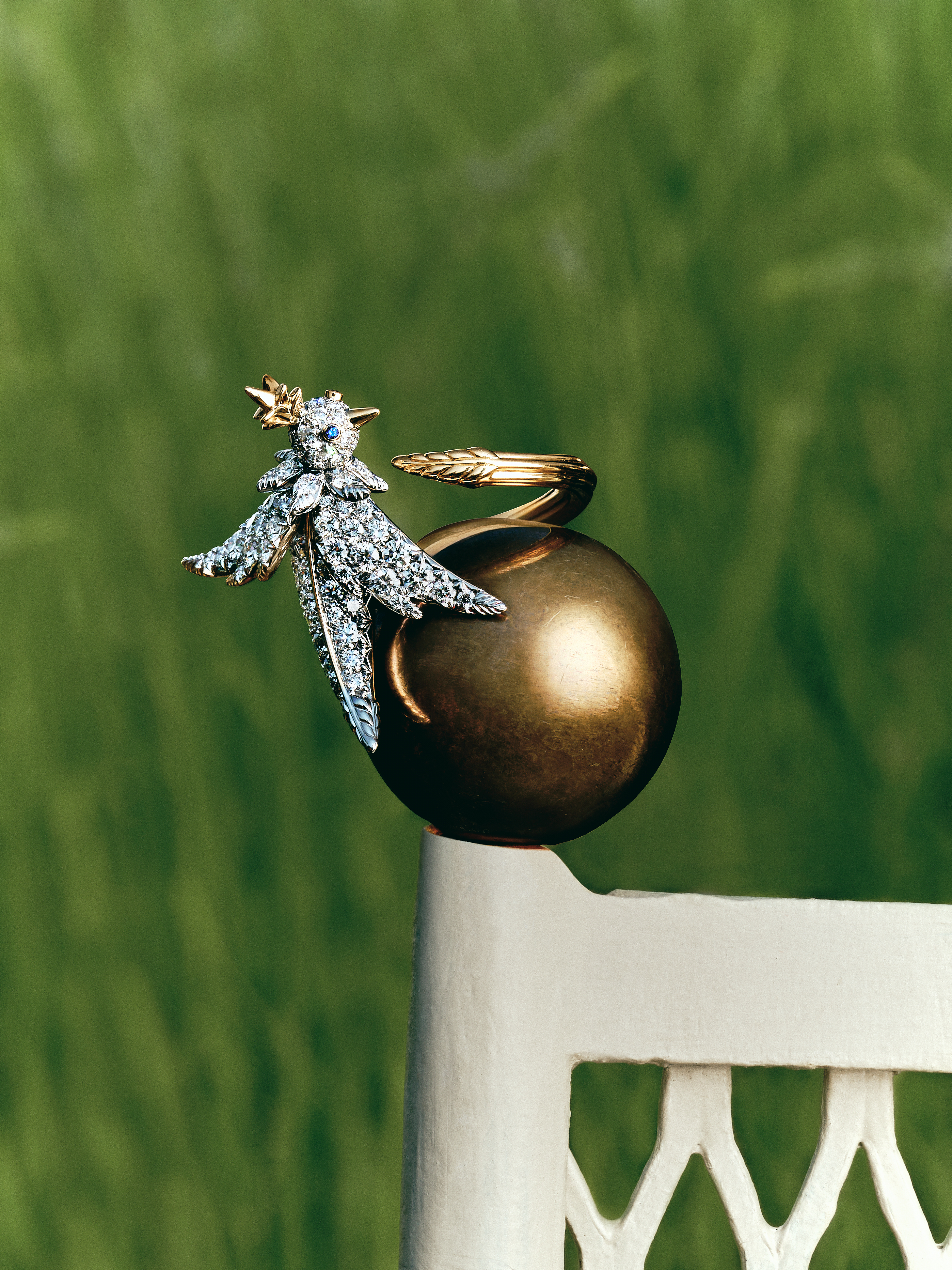
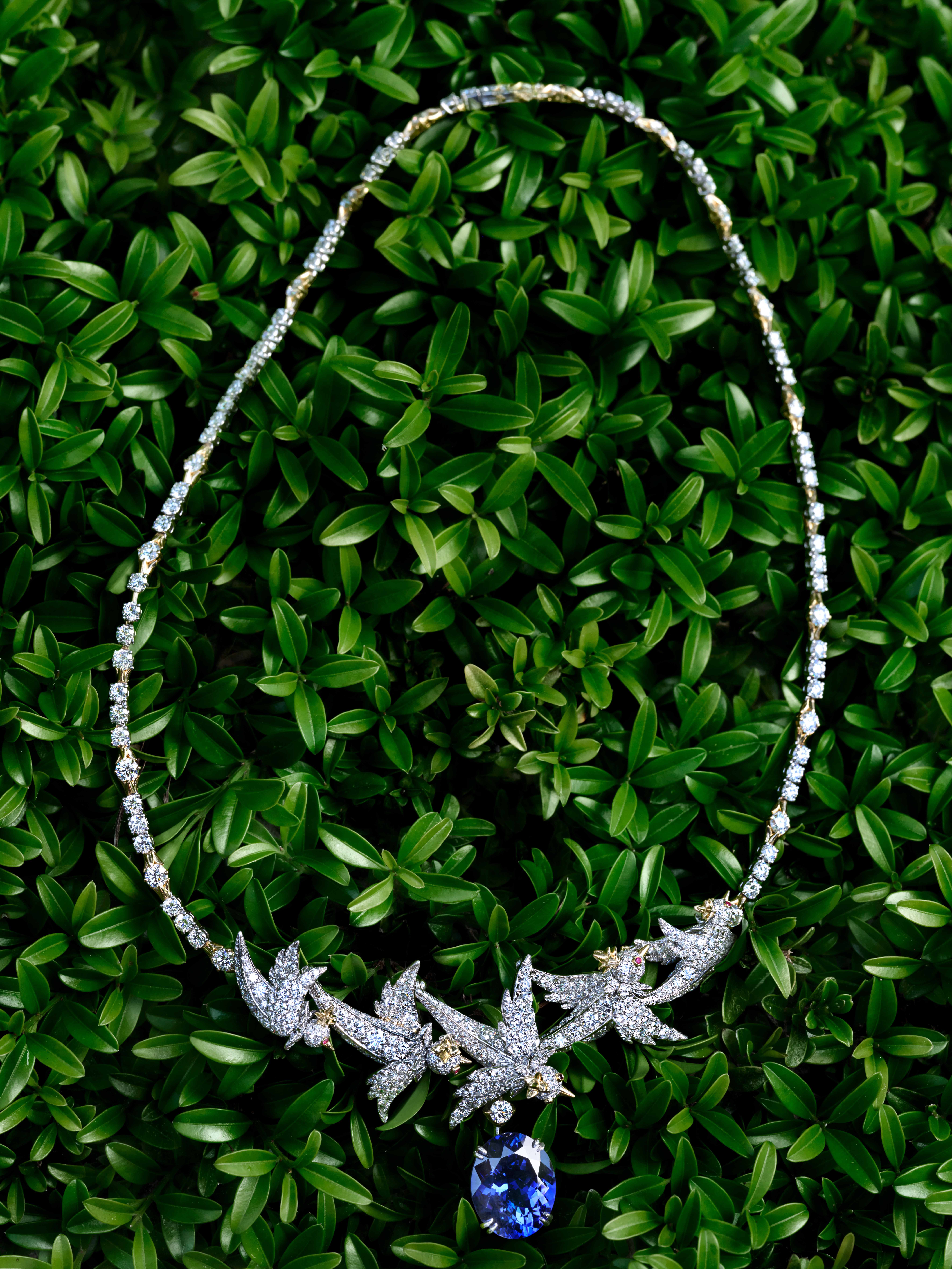

While interior enthusiasts dissect Oak Spring and Mellon’s other homes (in Manhattan, Cape Cod, Nantucket and Antigua), Mellon was, at heart and from childhood, a gardener. She had no formal training, only a passion for studying horticultural texts and putting her hands in soil. Her chief projects include Oak Spring (Schlumberger’s abiding inspiration); President John F. Kennedy’s White House Rose Garden; the gardens at Givenchy’s Manoir du Jonchet; and the restoration of the Potager du Roi, the king’s kitchen garden, at Versailles.
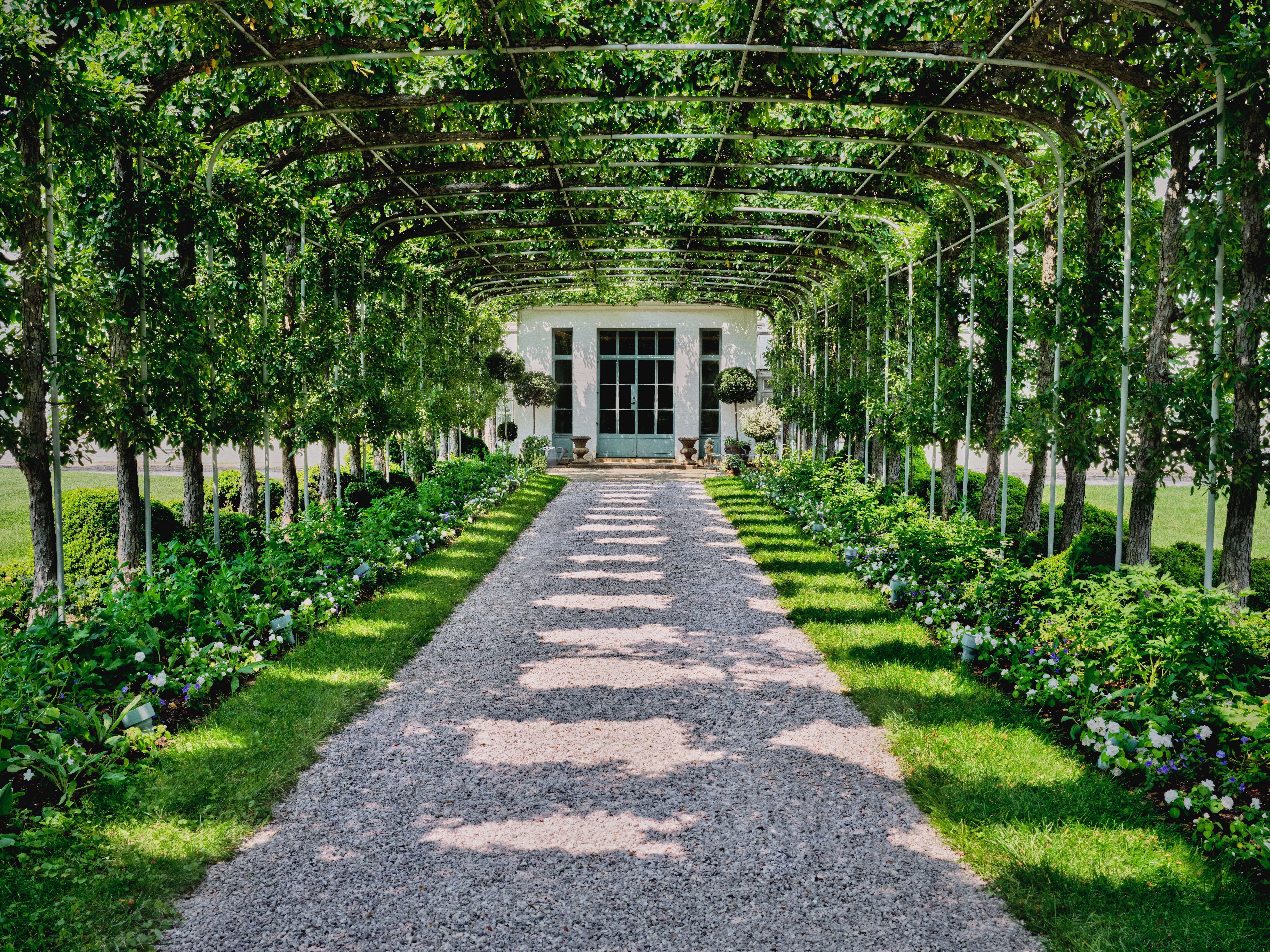
The crabapple-canopied Allée at Oak Spring.
Oak Spring is a hamlet of stone cottages located in the rolling hills of Upperville, Virginia, surrounded by farming, horsebreeding and hunting land. Its features have become part of American gardening iconography: the crabapple-canopied Allée; the espaliered holly trees; the potting shed’s trompe l’oeil murals; the Schlumberger-designed greenhouse finial, a bouquet in lead.
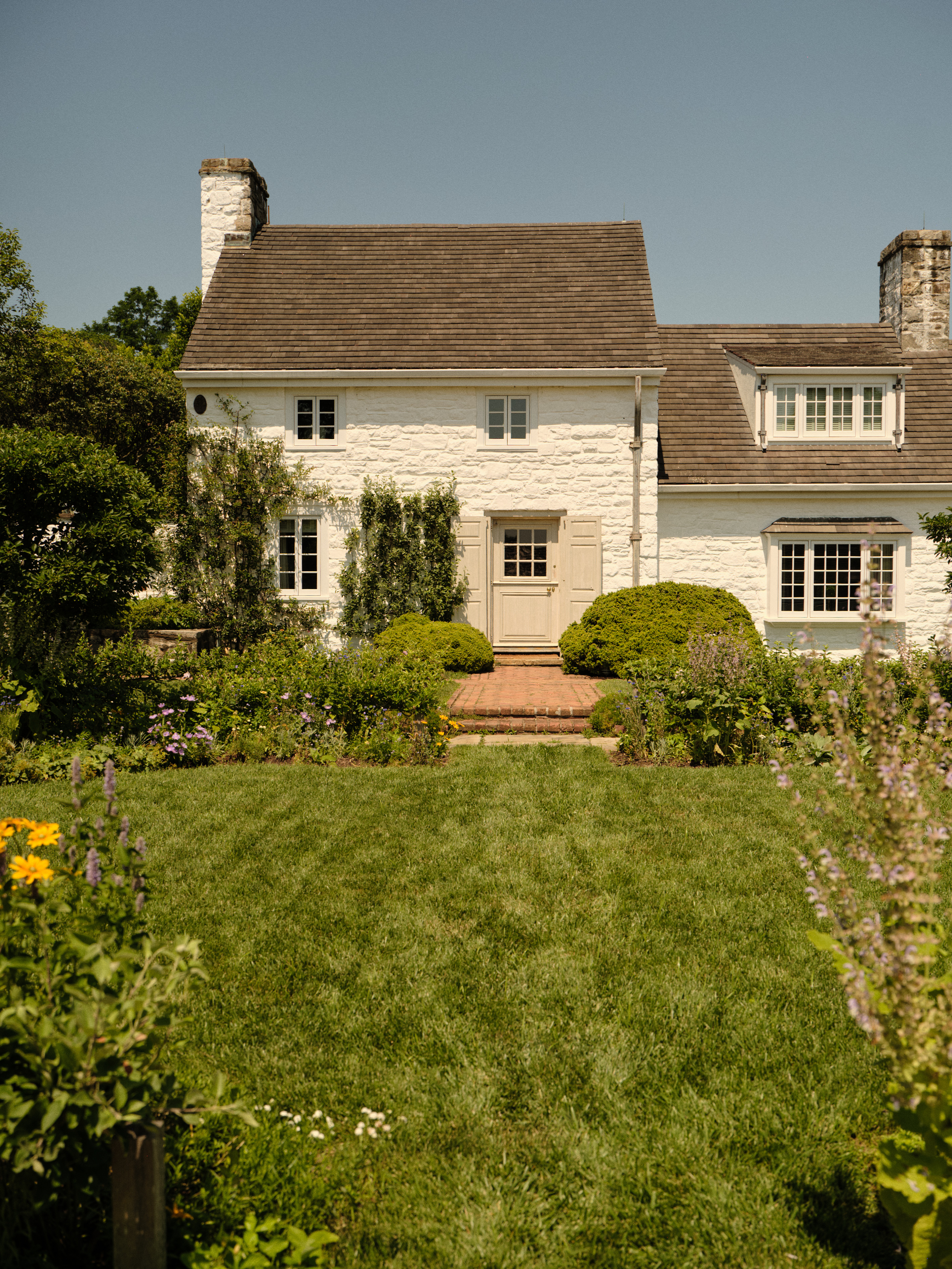
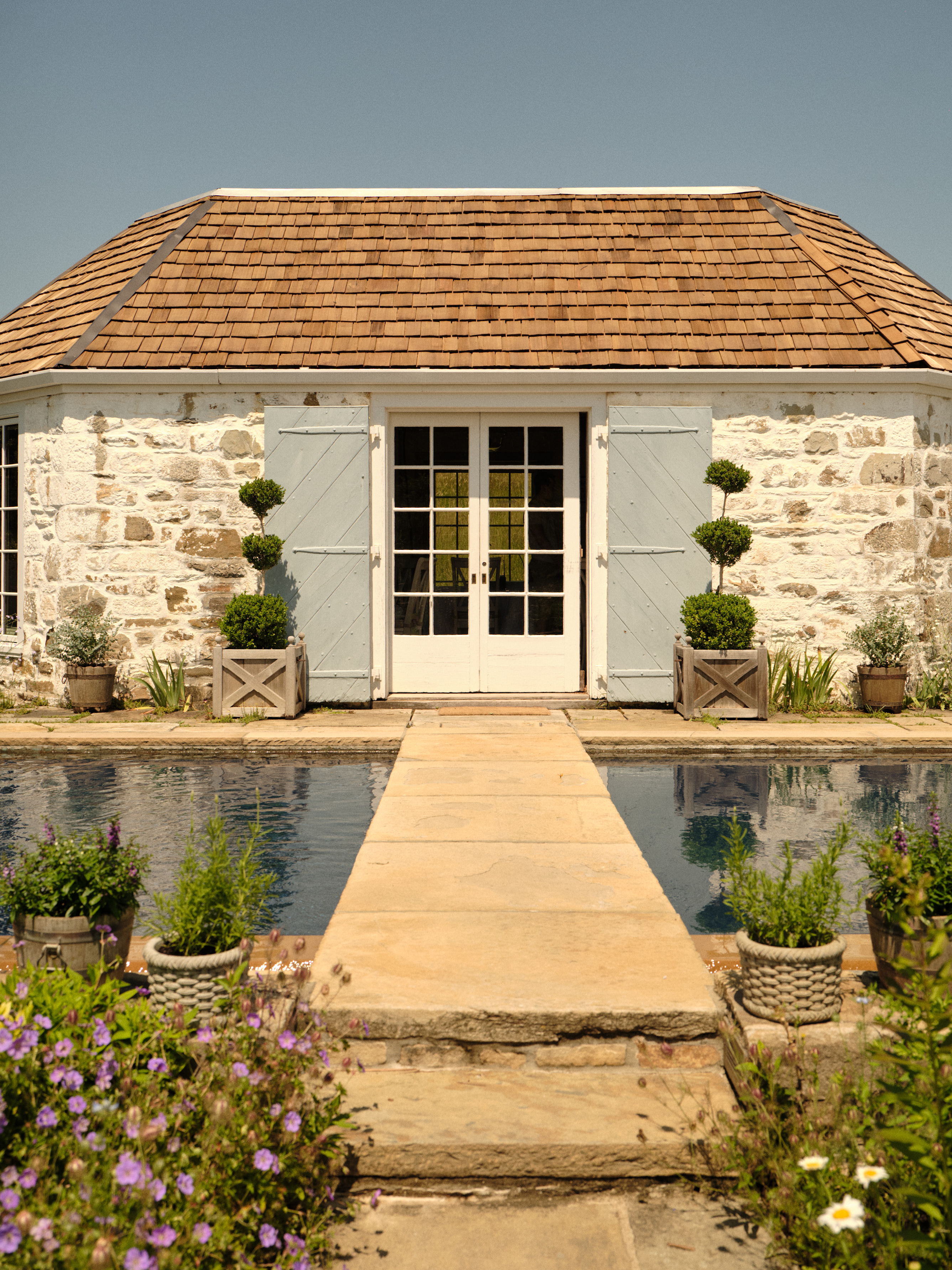
In 1953, the Mellons began construction on the home that would become Oak Spring, and Bunny set about designing its gardens. She conceived three connecting ‘rooms’: the Formal Garden, Allée and Formal Greenhouse.
Exquisite houses, the beauty of Nature, and how to get the most from your life, straight to your inbox.
The Formal Garden has three tiered terraces, laid out in parterres and traversed by a path. Each terrace has a unique planting scheme; flowers include wisteria, tulips, various lilies and roses, hyacinths, violets, bluebells and pansies. Boxwood provides borders, and trees include apple, hardy orange and myrtle.
Mellon designed the garden to have color in every season. It never had a day off and neither did she. Hours a day were spent pruning and potting, all while conducting a crew of up to 30 gardeners. Characteristically, she embraced the garden’s imperfections, allowing, for example, fleabane daisies and thyme to grow between paving stones.
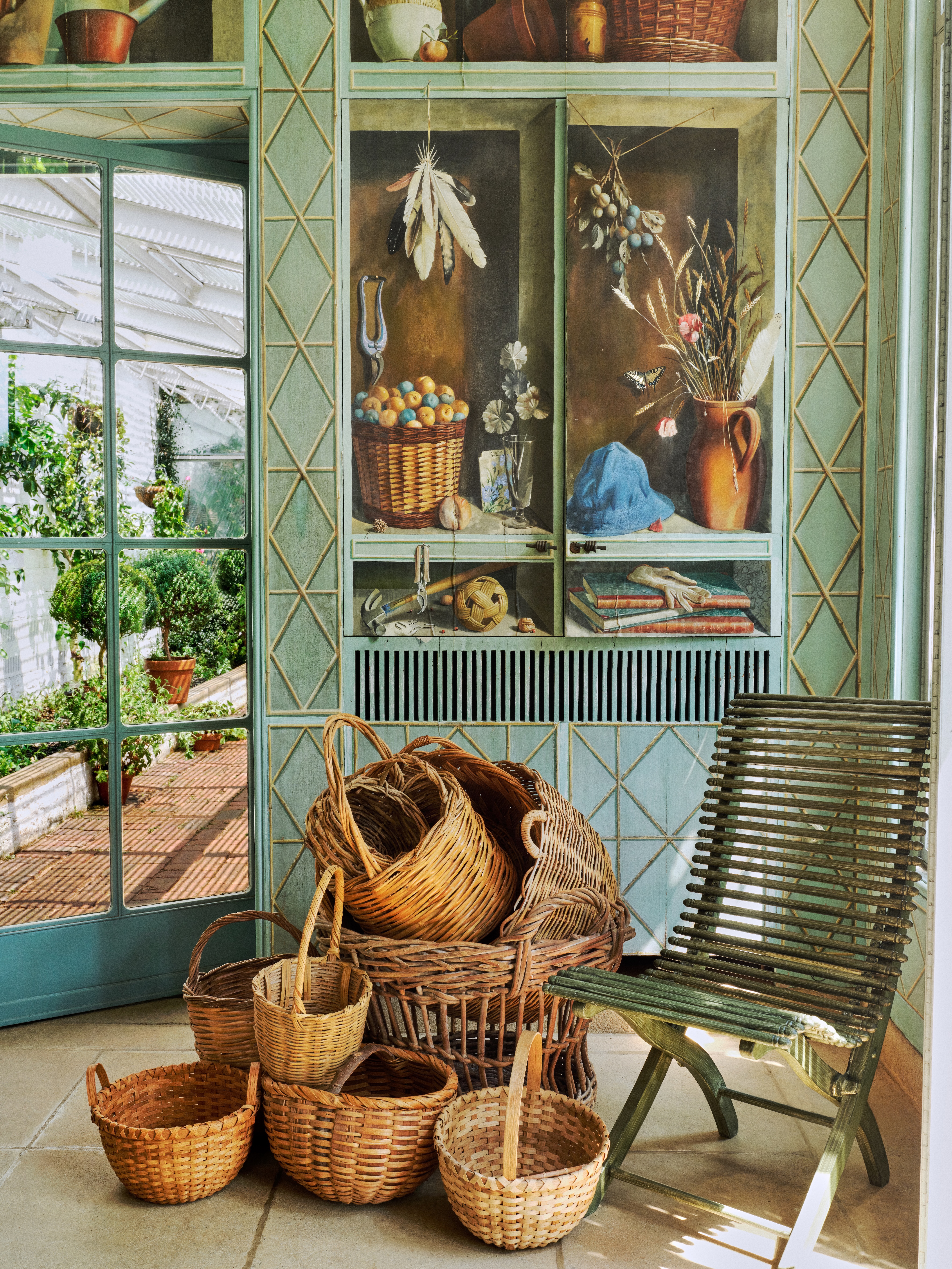
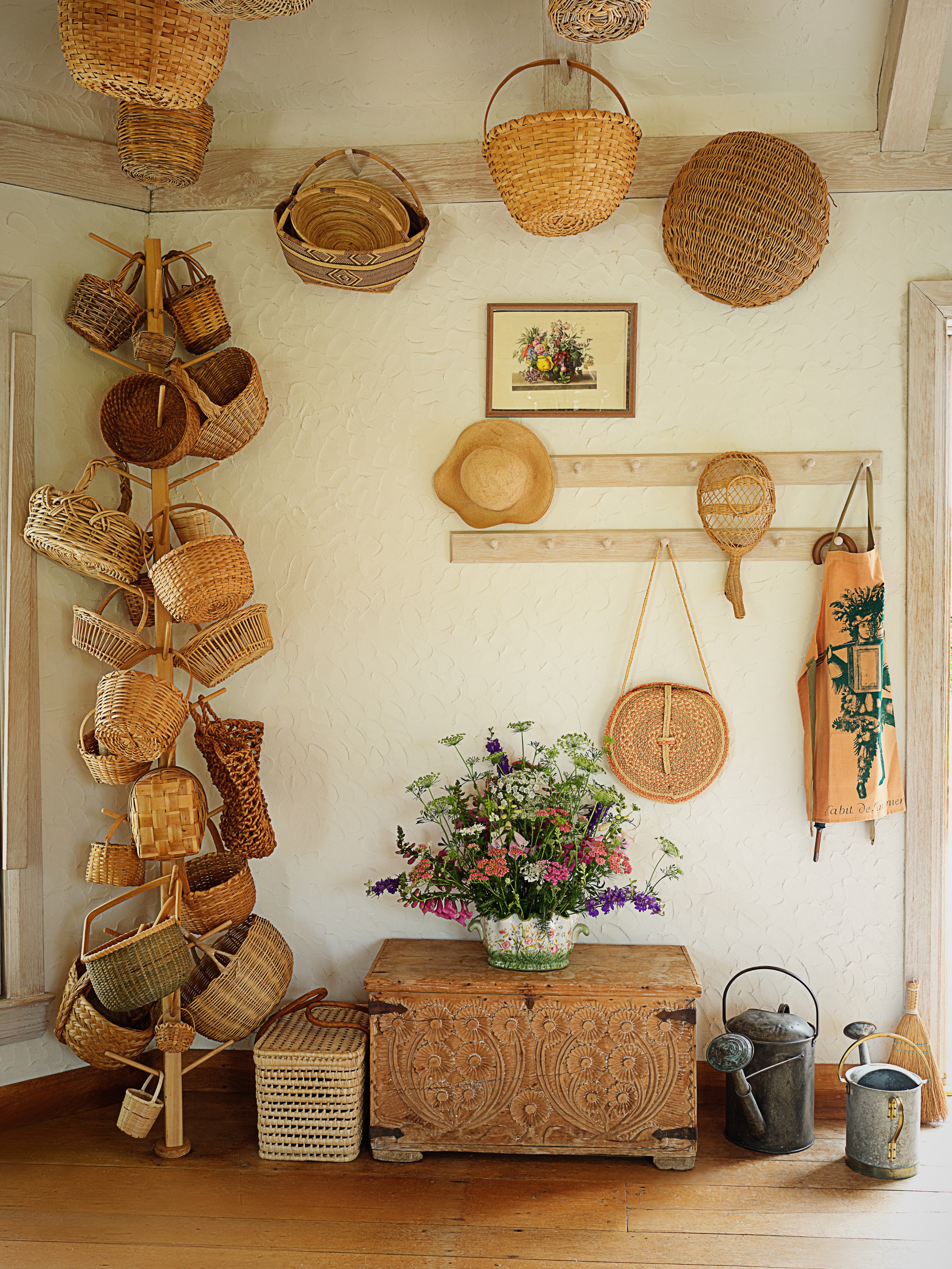
Interior designer Bryan Huffman talked daily with Mellon in her later years and visited her at Oak Spring (its other guests include Elizabeth II). He describes to me the casual elegance of the home most have seen only in photos: the frayed Tillett slipcovers, the Van Gogh hung over a smoky fireplace. Given the Mellon fortune — Paul was one of America’s richest men — Huffman praises Bunny’s discipline in design. ‘When you could buy anything in the world, to have had restraint — that was one of her greatest attributes’, he says. ‘She loved simplicity’.
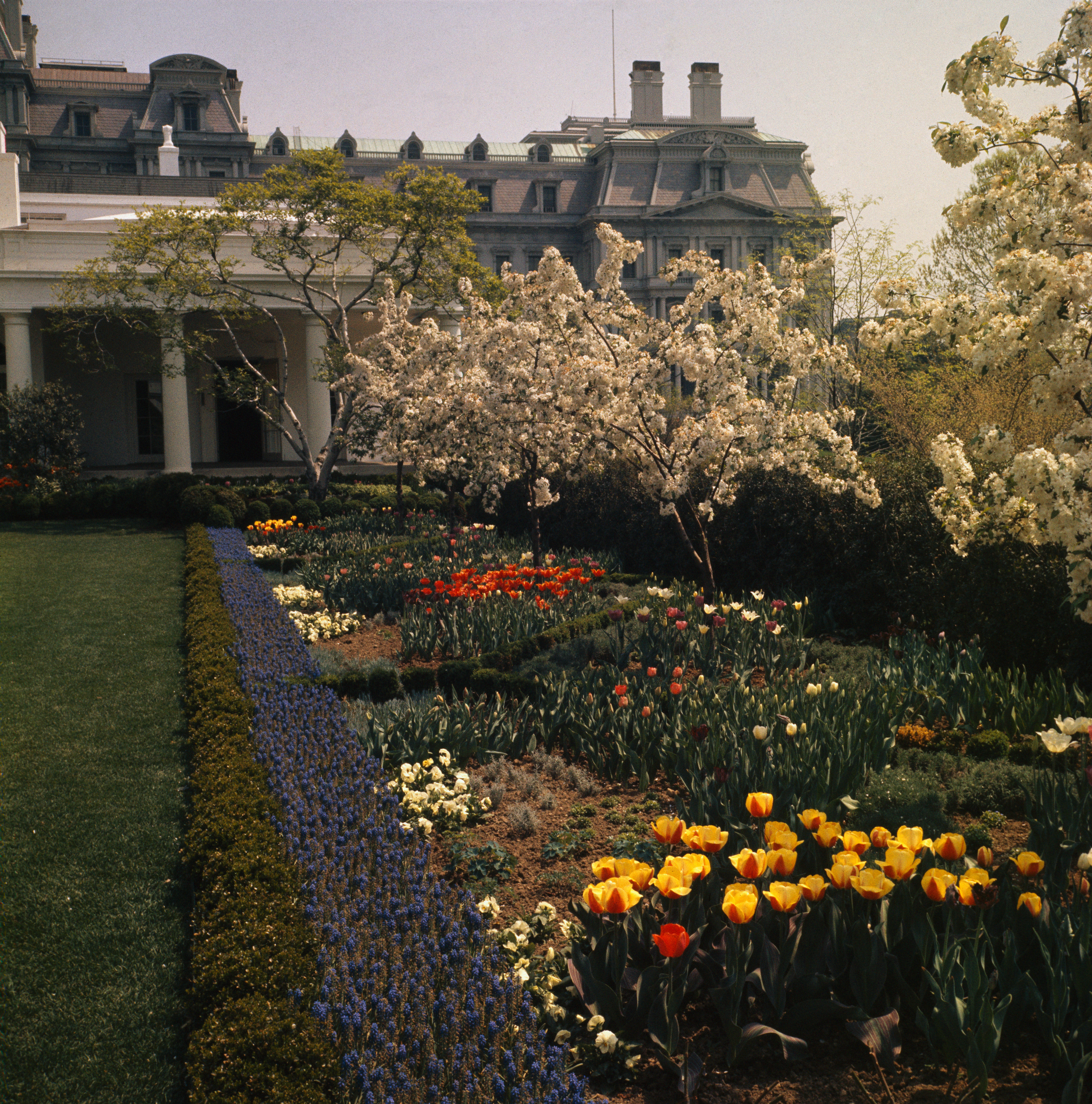
The White House Rose Garden was laid out in the early 1960s, but paved over this summer. The Jackie Kennedy Garden was destroyed during the recent demolition of the building's East Wing, on the orders of Donald Trump.
In 1961, during one of the Kennedys’ visits to the Mellons on Cape Cod, the new president asked Bunny to redesign the White House Rose Garden. He wanted a garden to rival those he’d seen in Europe — and a set for televised events. Mellon agreed, enlisting landscape architect Perry Wheeler.
Mellon began her design by anchoring each of the rectangular plot’s corners with a saucer magnolia. A 12-ft-wide (about 3.5 metres) bed would border the two long sides and be sectioned into diamond shapes, each planted with a Katherine crabapple, underplanted with seasonal flowers.
With the Rose Garden complete in 1962, Kennedy showed it off to the world, using it for events including Sir Winston Churchill’s honorary citizenship ceremony. Mellon remained involved with the garden, later helping First Lady Nancy Reagan refresh it. However, the Rose Garden has not survived the current administration: It was paved over this summer. Another Mellon project at the White House, the Jacqueline Kennedy Garden, was destroyed in the recent East Wing demolition.
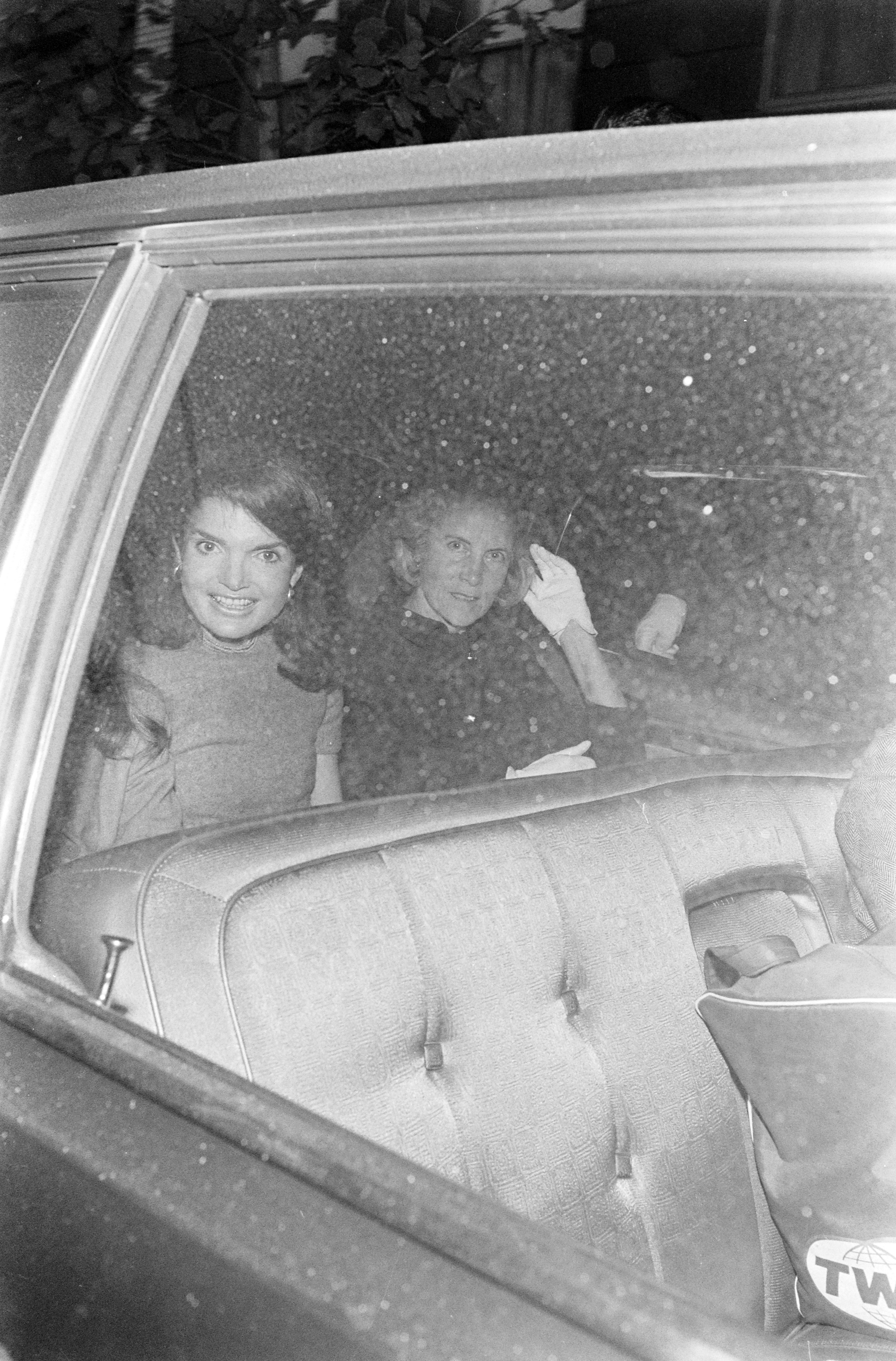
Jacqueline Kennedy leaving her apartment for her wedding to Aristotle Onassis, accompanied by Bunny Mellon.
Across her oeuvre, Mellon emphasised integrating the landscape with surrounding architecture and considering the shadows plants cast. Her mantra was ‘nothing should be noticed’. The whole should make the statement, rather than any part.
Mellon and Givenchy shared their love of gardening. After he acquired Manoir du Jonchet, outside Paris, in 1975, the two collaborated to redesign its 224-acre grounds. Mellon, a student of France’s great gardeners, believed the landscape, originally laid out in the Louis XIV style, should better align with the Renaissance architecture. The resulting redesign is most notable for the lawn’s large parterres of boxwood hedges in concentric circles, inspired by a Venetian cloister. Later, in 1988, Mellon and Givenchy added, in the middle of a wood, a bountiful potager inspired by Mount Vernon, George Washington’s plantation.
Givenchy reveled in Mellon’s process, particularly her using a model of a tree to demonstrate the silhouettes and shadows of plantings under consideration. In the end, they whimsically planted some tree shadows with flowers (blue scilla, narcissus, violets), rather than having flower beds.
In the mid-1990s, a couture-retired Givenchy presided over World Monuments Fund France and mounted the restoration of the Potager du Roi at Versailles. He again invited Mellon to collaborate; the two pored over the handbook of original designer Jean-Baptiste de La Quintinie and visited other châteaux with notable potagers. Paul Mellon provided financial backing.
At an event to mark the successful restoration, Bunny received a standing ovation from the French laborers she’d worked with. According to Bryan Huffman, the show of support from her fellow gardeners, disparities in class aside, touched her deeply. ‘All the gardeners were in the back cheering for Bunny’, Bryan says. ‘She said that was one of the high points of her life’.
Owen is Country Life’s New York arts and culture correspondent. Having studied at the New York School of Interior Design, his previous work includes writing and styling for House Beautiful and creating watercolour renderings for A-list designers. He is an unreconstructed Anglophile and has never missed a Drake’s archive sale.
